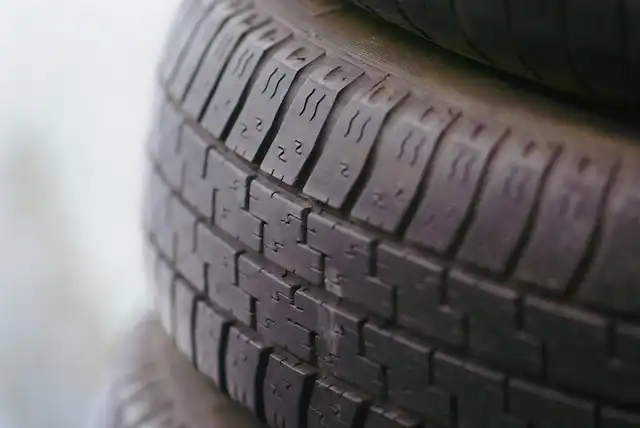Last updated on January 4th, 2024 at 12:51 pm

Tire sipes and grooves are very important parts of tread design and pattern. Usually, all passenger car tires have sipes and grooves. However, some high-performance summer tires do not come with tire sipes and grooves.
Tire sipes are cut marks on the tire tread; the idea of siping tires comes from a sipes inventor who put cut marks on his shoes so that his shoes wouldn’t slip in the rain, which he was so annoyed by. Similarly, the manufacturers put cuts on the tire tread so that the tire avoids slipping in rain, winter, and snow conditions.
The reason for putting tire grooves is similar to sipes, which is to improve wet and ice terrain drive. The tire grooves also improve the ability of the tire to stand still in wet and slippery conditions of the ice so that the tire can be driven in both dry and wet conditions.
In this article, we will talk about the importance of tire sipes and grooves, how should you do it, and whether should you really do it or not. The tire sipes and grooves designs come pre-built on most tires nowadays, that’s why looking for your desired type of tread design is not an option that the tire models provide.
Table of Contents
Importance of tire sipes
The most important thing that tire sipes provide is they bring biting edges to tires. Biting edges are very helpful to avoid losing grip on wet and snow-covered roads. With the help of sipes, the tire contact patch handles the situation confidently while moving at a faster pace without losing traction and grip.
Tire sipes also improve the handling response in wet and dry conditions. That is why even with performance summer tires, tire sipes are given. With that, tread durability, noise reduction, and comfort are some of the benefits that can be achieved due to the availability of the right shape and the right width of sipes on tires.
Importance of Tire Grooves
Winter and wet performance are zero without grooves on tires. The tire grooves are the most important ingredient on tire tread that makes the tire confidently move on water, snow, and ice-covered roads, while also providing stable and comfortable rides.
The tire grooves channel the water, slush, and snow off the tread of the tire. Without grooves, on winter terrains, the snow will sit on the tire tread, which will be useless after a few miles on winter terrains. In wet conditions, they will not be able to resist hydroplaning or aquaplaning, which will cause the most dangerous and slippery ride.
Types of sipes and grooves on the tire
Different types of sipes and grooves are available with different tires for specific conditions. There are zigzag sipes put on the center of the tread, and they are good for providing extra biting edges by moving water and ice in winter conditions.
There are longitudinal sipes that are sometimes straighter than zigzag sipes. These types of sipes usually come with summer tires which improve handling response and brakes on wet, dry, and snow terrains.
Just like sipes, there is one type of groove that is circumferential that you can see between tread block columns. These straight empty lines between tread blocks are the decider of the tire tread depth, these grooves prevent ice and slush from sticking to the tread.
Another type of sipes includes lateral grooves, which instead of straight lines, are in a horizontal way. Mostly, they are located on shoulder blocks to channel the water and ice away from the tire tread, which improves hydroplaning resistance and winter and wet condition performance as well.
Different Sipes and Grooves in different conditions
Usually, summer and high-performance tires come with very few and sometimes no sipes at all. The reason for that is they require more traction on dry terrain, which sipes block. Also, they are not so driveable in winter conditions, so the summer tires don’t usually require biting edges which deep sipes provide.
In all-season tires, the presence of grooves and tire sipes are in shallow and narrow shape. Giving all-season tires, deep grooves, and sipes will reduce the comfort that all-season tires are commonly preferred for.
In winter conditions and snow terrain, tires, deep sipes, and wide grooves are available to handle extreme conditions; the impact of these tire sipes and grooves comes directly onto the comfort, noise, and steering response of the tire.
Adding sipes on tires
Manually adding sipes on tires is still in practice; some auto repair shops provide these services to aftermarket tires. For someone who is looking to improve the trie performance in snow and wet conditions, adding these sipes really changes the game. The tire grips very well after adding sipes on its tread and also tire delivers proper handling response and shorter brakes, which are all great for achieving better winter performance. With that being said other performances than winter conditions will be destroyed after adding manual sipes.
Should You Add Sipes On Tires
As we mentioned for improving winter terrain rides, adding sipes is beneficial, however, for a very short period of time. Manual tire siping weakens the treadwear of the tire, and also manually siped tires void the tire warranty. After a few miles, the tire will wear off faster than before, and also the comfort and noise will also be destroyed.
Siping tires do more damage than they provide benefits in the long run, especially if the tire is of a good brand. Aftermarket tire siping is fine, however, make sure that you can compromise with these drawbacks that tire siping brings. In our opinion, it is better to buy new winter tires rather than wasting money on siping tires, which will wear off after a very short period.
Tire performance without sipes and grooves
Most summer drivers prefer slick tires and also tires without grooves and sipes run on racing events like F1, which is great for achieving dry traction, cornering, and stability; however, in winter and wet conditions, the tire without these things will be so bad. The tire will lose grip, won’t resist hydroplaning, and the rakes will be worse. Just by adding sipes and grooves to the tread, the tire performance changes in slippery conditions.
Conclusion
Tire sipes and grooves are some of the most important tread design factors that improve the tire performance of new tires. The manufacturers, after the tread compound, work on tire sipes and grooves to innovate their tires which perform better than their previous tires. Adding tire sipes manually is not a good thing due to the damage it brings afterward, that is why avoid it and choose the tire that comes with proper sipes and grooves that are molded rather than drawn on top of the tread.
